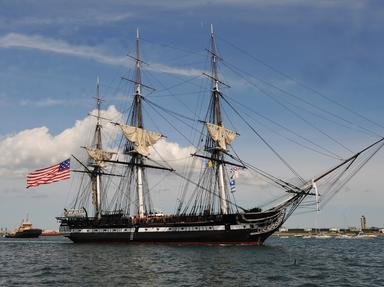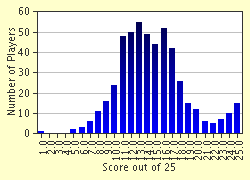Quiz Answer Key and Fun Facts
1. In the Massachusetts village of Salem, in the year 1692, twenty citizens were executed. What crime were they found guilty of?
2. In 1702 the French established a fur trading outpost in the present day state of Indiana. What was the name of that outpost?
3. In 1704 the first newspaper printed in the colonies was published and was called "The News-Letter". What city was it published in?
4. In 1716 Governor William Spotswood of Virginia led an expedition of fifty men into western Virginia. What did this expedition accomplish?
5. When the western Virginia exploration party returned to Williamsburg, what did Governor Spotswood do for each man that rode with him?
6. Queen Anne's War, King William's War, and King George's War were all English-French conflicts from Europe that spilled over into the colonies, initially in the form of Indian conflicts.
7. What were Britain and France fighting for in the New World?
8. In 1724 the English built a fort that is today the town of Brattleboro, Vermont. What was the name of the fort?
9. In 1732, by an Act of the British Parliament, James Oglethorpe established a colony that was designed to act as a buffer between the English colonies on the one hand and French territory and the Spanish claimed lands on the other. What was the name of this colony?
10. What was unique (at least initially) about the British colony newly settled in 1733?
11. In 1749 the Ohio Valley Company was formed and received a Royal Charter from the British throne for the purpose of settlement, as well as a grant of land at the confluence of the Monongahela and Allegheny Rivers and to build a fort. What was the name of this fort?
12. What river is formed by the confluence of the Allegheny River and Monongahela Rivers?
13. In 1753 the Governor of Virginia dispatched a young militia officer to hand deliver a note to the French at Fort Duquesne demanding the withdrawal of all French influence in the region. Who was this militia officer?
14. In 1755 the British were so angered by the rebuke to Washington by the French that British soldiers were ordered to march to the area and took Fort Duquesne back using superior British military force.
15. The French and English went to a full blown, "winner takes all" war. In the colonies the war was named The French and Indian War. What was the European name for this conflict?
16. The Treaty of Paris, which ended The Seven Years War, allowed France to keep fur trading posts on the Great Lakes but gave Canada to England.
17. As a result of the Treaty of Paris native Americans (Indians) that had allied themselves with the French were also forced to give up their lands and move westward.
18. The Proclamation of 1763 was a sort of "thank you" from the king and gave an additional 100 acres of land to officers of the colonial militia that help defeat the French.
19. In 1767 a land survey was completed that marked the boundaries between Maryland, Pennsylvania and Delaware. What was the name of this boundary?
20. Hoping to keep British settlers away from their sacred homelands, the Iroquois Nation signed the Treaty of Fort Stanwix in 1768, giving up their claim to the Ohio Valley.
21. What was the name of the treaty that southern settlers forced the Cherokee Nation to sign?
22. After The French and Indian War the English granted the local governments the right to tax themselves to raise the revenues required for their defense.
23. What were the citizens of Boston protesting when the British troops opened fire on them in 1770, killing five?
24. In 1773 what did the Sons of Liberty do in Boston that outraged the British government?
25. Because they supported the rebels in Massachusetts, the Royal Governor of Virginia dissolved the House of Burgesses.
Source: Author
Ironsides 163
This quiz was reviewed by FunTrivia editor
bloomsby before going online.
Any errors found in FunTrivia content are routinely corrected through our feedback system.

